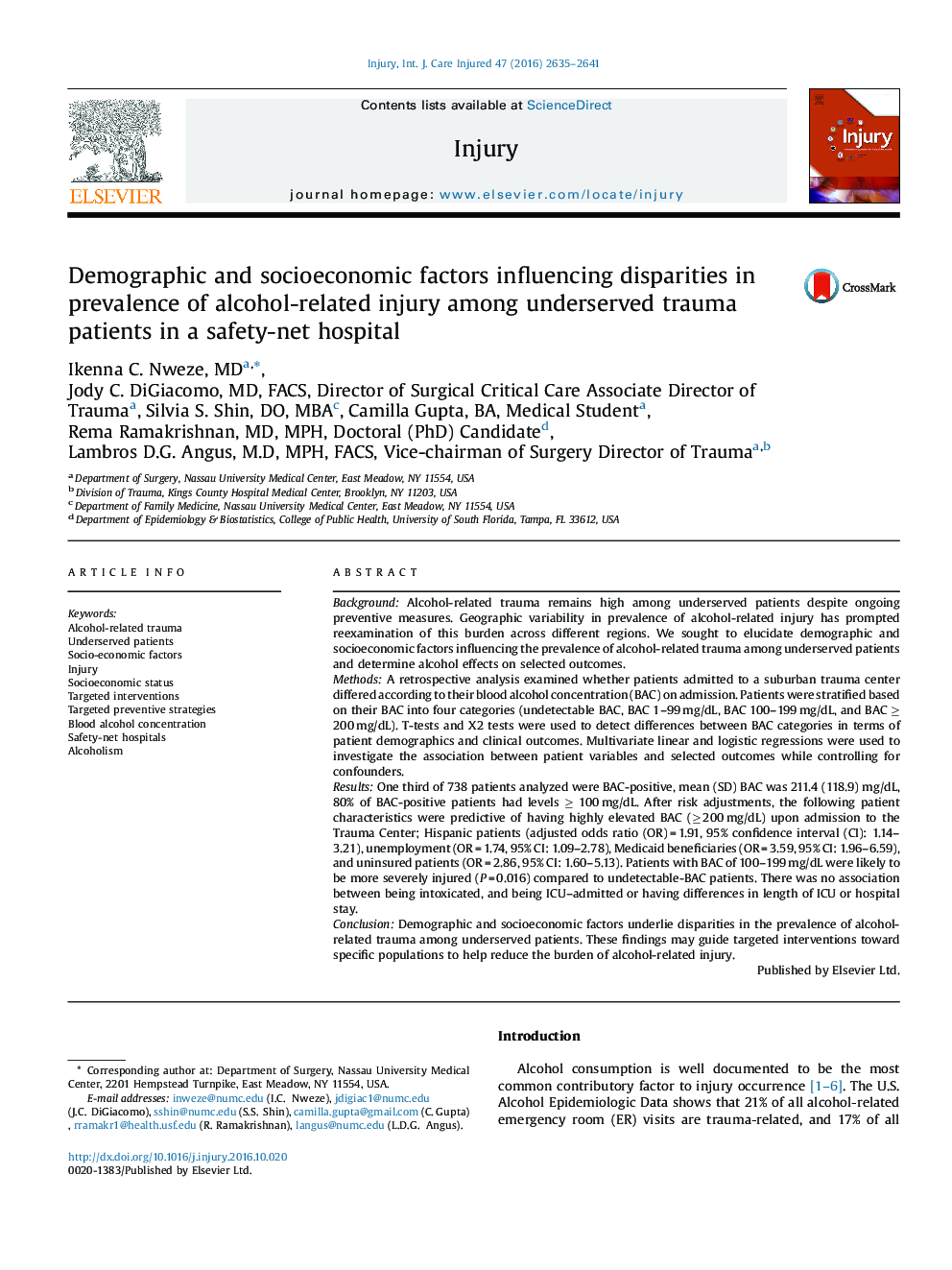| کد مقاله | کد نشریه | سال انتشار | مقاله انگلیسی | نسخه تمام متن |
|---|---|---|---|---|
| 5652726 | 1407225 | 2016 | 7 صفحه PDF | دانلود رایگان |
BackgroundAlcohol-related trauma remains high among underserved patients despite ongoing preventive measures. Geographic variability in prevalence of alcohol-related injury has prompted reexamination of this burden across different regions. We sought to elucidate demographic and socioeconomic factors influencing the prevalence of alcohol-related trauma among underserved patients and determine alcohol effects on selected outcomes.MethodsA retrospective analysis examined whether patients admitted to a suburban trauma center differed according to their blood alcohol concentration (BAC) on admission. Patients were stratified based on their BAC into four categories (undetectable BAC, BAC 1-99 mg/dL, BAC 100-199 mg/dL, and BAC ⥠200 mg/dL). T-tests and X2 tests were used to detect differences between BAC categories in terms of patient demographics and clinical outcomes. Multivariate linear and logistic regressions were used to investigate the association between patient variables and selected outcomes while controlling for confounders.ResultsOne third of 738 patients analyzed were BAC-positive, mean (SD) BAC was 211.4 (118.9) mg/dL, 80% of BAC-positive patients had levels ⥠100 mg/dL. After risk adjustments, the following patient characteristics were predictive of having highly elevated BAC (â¥Â 200 mg/dL) upon admission to the Trauma Center; Hispanic patients (adjusted odds ratio (OR) = 1.91, 95% confidence interval (CI): 1.14-3.21), unemployment (OR = 1.74, 95% CI: 1.09-2.78), Medicaid beneficiaries (OR = 3.59, 95% CI: 1.96-6.59), and uninsured patients (OR = 2.86, 95% CI: 1.60-5.13). Patients with BAC of 100-199 mg/dL were likely to be more severely injured (P = 0.016) compared to undetectable-BAC patients. There was no association between being intoxicated, and being ICU-admitted or having differences in length of ICU or hospital stay.ConclusionDemographic and socioeconomic factors underlie disparities in the prevalence of alcohol-related trauma among underserved patients. These findings may guide targeted interventions toward specific populations to help reduce the burden of alcohol-related injury.
Journal: Injury - Volume 47, Issue 12, December 2016, Pages 2635-2641
